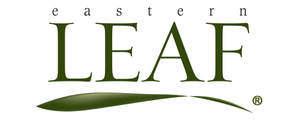
Which is the best bonsai tree for beginners? Our Top 3 Bonsai Trees for Beginners
Choosing a species of tree to start can be difficult. However, we always recommend beginning with a bonsai tree that will help you learn the essential techniques for keeping a bonsai tree alive. Below are some of our top picks for a beginner bonsai tree as well as the type of training techniques that can be applied to it and difficulty in care.
We've chosen 3 of our most popular species of trees below. Each tree has its own unique traits as well as different bonsai techniques that can be applied to them.
Ficus Bonsai - The Easiest Bonsai for both Indoor and Outdoor
The Ficus bonsai is the bonsai we recommend for beginners that are new to bonsai and do not have the time for regular waterings. Since the ficus is so resilient to underwatering, it makes it ideal for those that want a low maintenance tree. Pruning the ficus bonsai is as simple as cutting back leaves. Since Ficus bonsai backbud so easily, they can be pruned back anywhere and at almost any time. New leaves will bud from the branches near the cut.
Ficus bonsai trees can also be grown indoor. This makes them a great candidate for a tree that will be placed either on kitchen counter, office, or other indoor setting.
Chinese Elms - Clip-and-Grow Training
Chinese elm bonsai trees are our favorite tree to start with for those looking to learn about the basics of pruning, lighting, watering, and maintaining a bonsai. Since the shape of the trunk on elms are set already, the focus is more on the development of pad layers and secondary branches.
We recommend watching our video on " How to prune a Chinese Elm". This video will demonstrate the techniques on how to develop secondary branches, direct growth, and control the shape of your bonsai tree.
Chinese elms prefer an outdoor setting and filtered sunlight. They also enjoy a daily watering. Once you've mastered keeping a Chinese Elm tree alive and healthy, you'll be able to handle almost any type of bonsai tree.

Since the shape of the trunk on Chinese elms are set, the focus is more on the development of pad layers and secondary branches."
Juniper Bonsai Trees - Wiring and Outdoor Care
Juniper bonsai trees are a great tree to start with if you want to jump right into bonsai. Junipers will require regular waterings as well as adequate sunlight and airflow to thrive.
Wiring is the biggest advantage of starting with a Juniper bonsai tree. The branches of juniper bonsai trees can be trained with wire and shaped to any form that you would like. The trunks can also be trained with thicker wire to create movement that is more unique. We recommend the video "How to create movement in your Bonsai" for a demonstration of how to apply wire to a Juniper bonsai trunk.
For details on how to wire your secondary branches, we recommend our wiring tutorials and follow up. Wiring Videos.
If you are looking to getting a "hands-on" approach to bonsai, we recommend junipers. They will allow you to manipulate and employ the majority of bonsai techniques to your tree. Junipers can also be shaped to exactly how you would like the tree to grow. You can choose the styles ranging from formal uprights, informal uprights, to cascades.
Juniper bonsai trees allow you to choose the bonsai design style, ranging from formal uprights, informal uprights, to cascades."
Jade Bonsai Trees
For those looking for a very minimal maintenance tree, the jade are great species of tree. The Jade bonsai is a succulent adapted bonsai tree that takes the best qualities of succulents with the aesthetics of bonsai. Jades can be trained with wire (if left to dry out a feel days prior). They can also be pruned back which encourages them to back bud very easily. For care tips, please watch our video on our most popular variety of jades, the Cork Jade Bonsai. "How to care for a Cork Jade Bonsai Tree"
Broadleaf Trees
There are many other broadleaf trees that are also very easy to care for. These trees include olives, boxwoods, hollys, and other shrub like trees that can be trained easily using the clip and grow method. They are also great for beginners due to their resiliency to underwatering.




